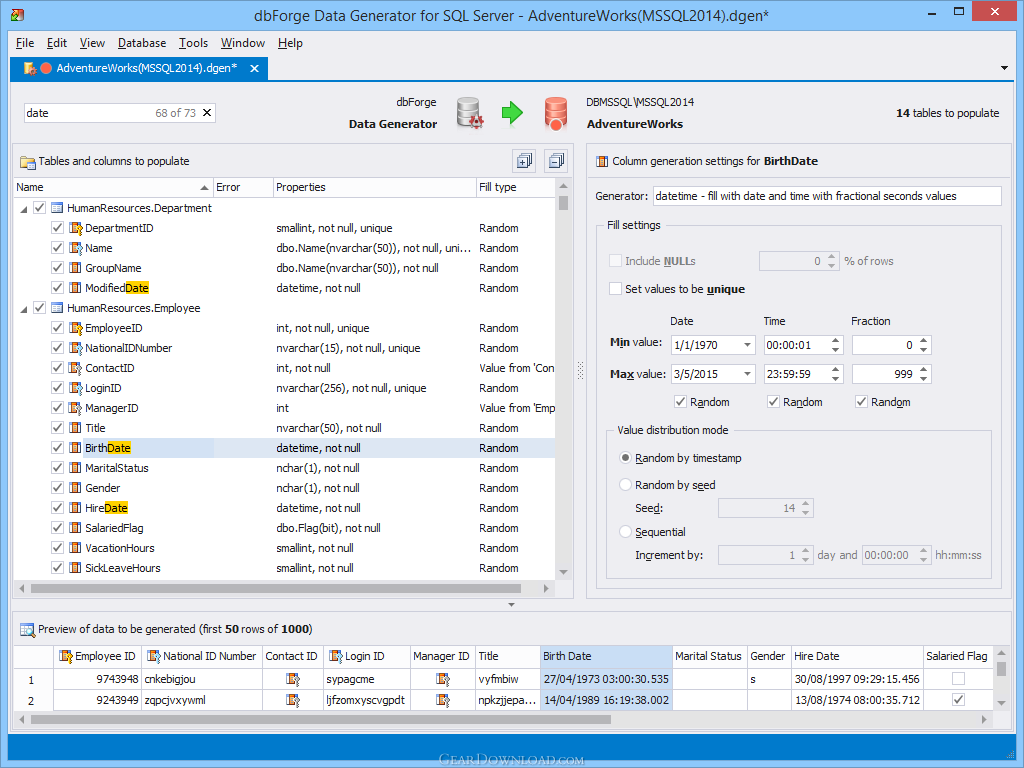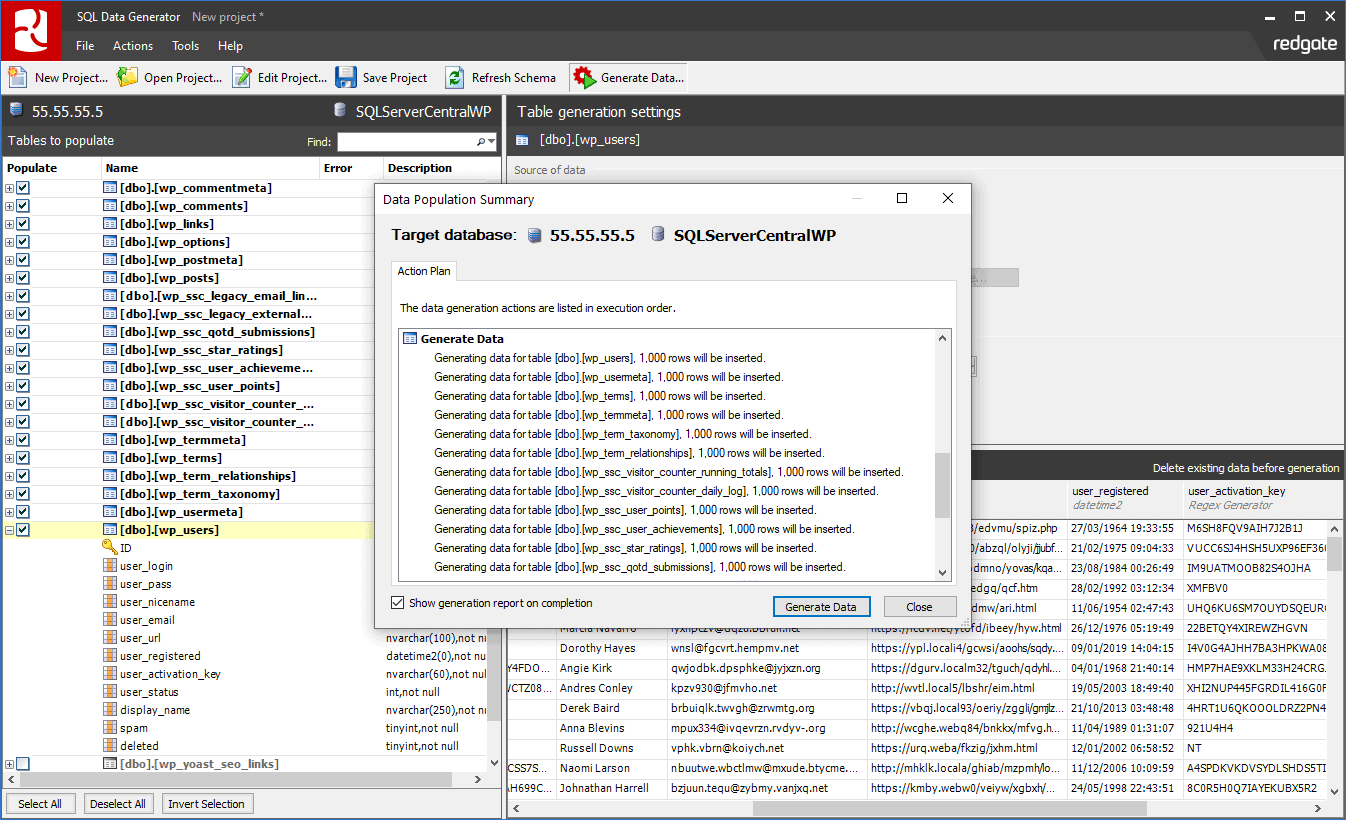

#Sql dummy data generator install#
It comes bundled into “SQL Toolbelt Essentials” and during the install process you simply select only the tools from the toolbelt that you need. To create the Customers database and the sample tables, the script is available to download at the end of this article.įigure 2 Connect SQL Data Generator to the test databaseįirst, download SDG. We’ll also take a first look at the options available to customize the default data generation mechanisms that the tool uses, to suit our own data requirements. We’re going to take a look at how SQL Data Generator goes about generating realistic test data for a simple “Customers” database, shown in Figure 1. In such cases, the best solution is to use a test data generator, such as SQL Data Generator that can produce realistic but randomly-generated data, and is highly configurable to suit the demands of the data and the required tests. However, it is often not possible, either logistically or legally, to replicate vast volumes of production data in development and test servers. One way we can “shift left” database testing, so that it is performed as early as possible in the development cycle, is to give developers and testers access to data that reflects as accurately as possible the volume and nature of the real data. The downside is that it means that a lot of essential database testing is often delayed until “ the last stop before production“, and subsequently this can uncover a lot of nasty surprises late in the deployment pipeline. This is important because it means they can perform acceptance testing as well as security testing, performance testing, error-handling testing, and stress / load testing in production-like conditions, and so be confident they’ll see behavior comparable to what will be seen in production. Many organizations invest heavily in their User Acceptance Testing (UAT) environments, setting up infrastructure that mimics the production environment, and often using replicated production data.
#Sql dummy data generator how to#
This article takes a first look at how to use Redgate’s SQL Data Generator as a random data generator to populate SQL server databases with fake but realistic data.

For certain types of tests, such as stress and load testing, they will also need to be able to generate test data in volumes comparable to future production requirements. Developers need a fake data generator that they can use to produce test data sets that match the characteristics and distribution of the real data as closely as possible, so that they can perform effective test-driven development, for databases, right from the start of the development cycle.


 0 kommentar(er)
0 kommentar(er)
